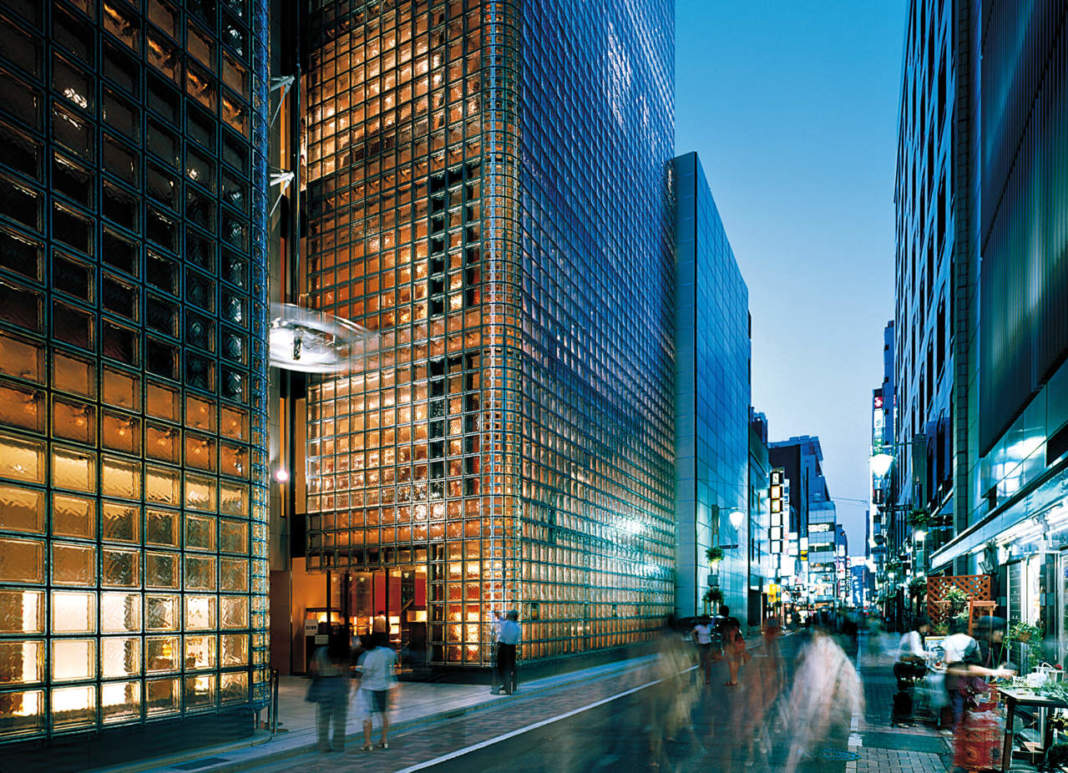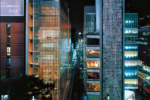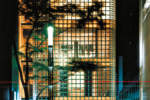architect: Renzo Piano
location: Tokyo, Japan
year: 19982006
French Group Hermès chose the Ginza district, in the heart of Tokyo, for its Japanese headquarters, a 6000 square metres buildings of shopping space, workshops, offices, exhibition and multimedia areas, topped by a French-style hanging garden. This project was both an esthetical and technical challenge. How, in the architectural diversity of Tokyo, could a “landmark” building be conceived, that would comply with the strict anti-seismic standards in Japan? The idea of a “magic lantern” lighting up in Ginza, like the ones traditionally hung at the doors of Japanese houses, soon made its way. The 13-floor building (3 underground) is 45 metres long and 11 metres wide. Its facades are entirely made of 45x45 cm specially designed glass block, the result of industrial development. These are the materials used to weave this “glass veil”, creating a continuous and luminous screen between the serenity of the inner spaces and the buzz of the city. This twofold aspect interior/exterior, the alternation between day and night, light and transparency leaves more to imagination than can actually be seen, and gives a refinement to the facade. The atmosphere created imparts both a traditional and a technological character to the building. This balance is also the key to the innovative anti-seismic system inspired by traditional Japanese temples that still stand despite frequent earthquakes. The backbone of this building is made up of a flexible steel structure, that is articulated at structurally strategic locations with visco-elastic dampers, from which cantilevered floors span to support the suspended glass-block facades. The entire building can move during earthquakes, according to pre-defined displacements, uniformly distributed over all the structural parts of the building. Each of the 13000 glass blocks which constitute the glass wall facade can absorb its share of the seismic movement, by moving up to 4 millimeters on each side. In this way, the building can tolerate the movement, and the integrity of the structure is guaranteed, but also that of the numerous networks that entice the building as well as its water and air tightness.
architects: Renzo Piano Building Workshop, in collaboration with Rena Dumas Architecture Intérieure (Paris)
client: Hermès Japon
date: 1998-2006
first phase: 1998-2001
design team: P.Vincent (senior partner in charge), L.Couton with G.Ducci, P.Hendier, S.Ishida (senior partner), F.La Rivière and C.Kuntz; C.Colson, Y.Kyrkos (modelli)
consulente progetto esecutiva: Takenaka Corporation Design Department
consulenti: Ove Arup & Partners (strutture e servizi); Syllabus (controllo costi); Delphi (acustica); Ph. Almon (illuminazione); R. Labeyrie (strutture audio/video); K. Tanaka (paesaggio); Atelier 10/N.Takata (code research); ArchiNova Associates (supervisione cantiere)
sculpture: S.Shingu phase two, 2002-2006
design team: P.Vincent (senior partner in charge), F.La Rivière; O.Aubert, C.Colson,
Y.Kyrkos (models)
consultants: GDLC Architectes/L. Couton (consulting architect); Ove Arup & Partners (structure and services); Delphi (acoustics); Ph. Almon (lighting); K. Tanaka (landscape); M. Gonzalez (specifications); ArchiNova Associates (site supervision); Takenaka Corporation Design Department (consulting executive architect)
photos: Michel Dénancé







